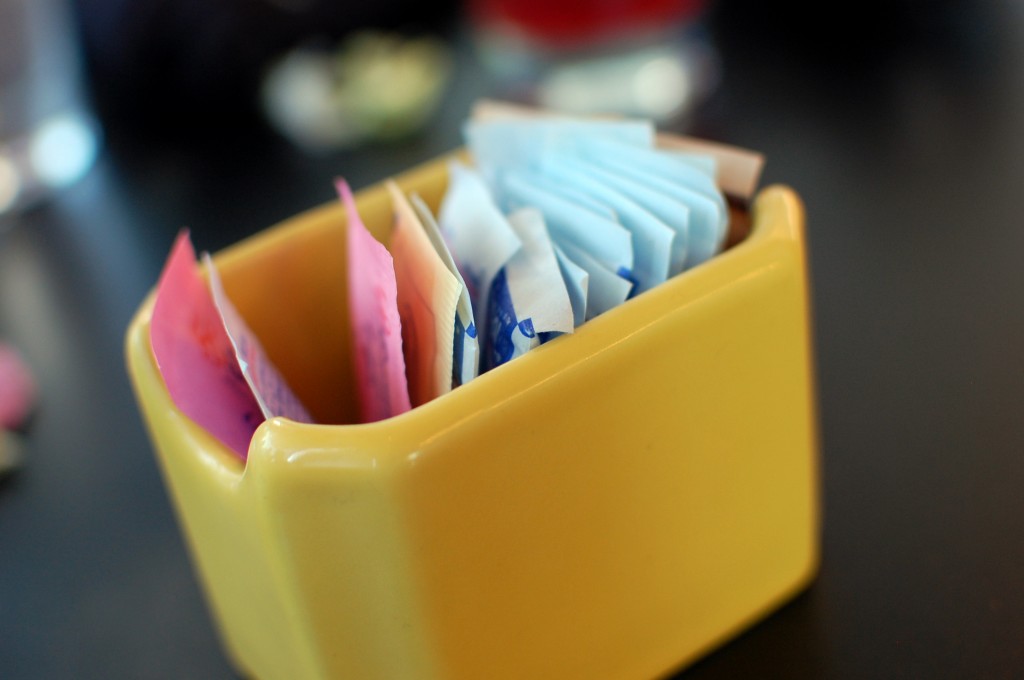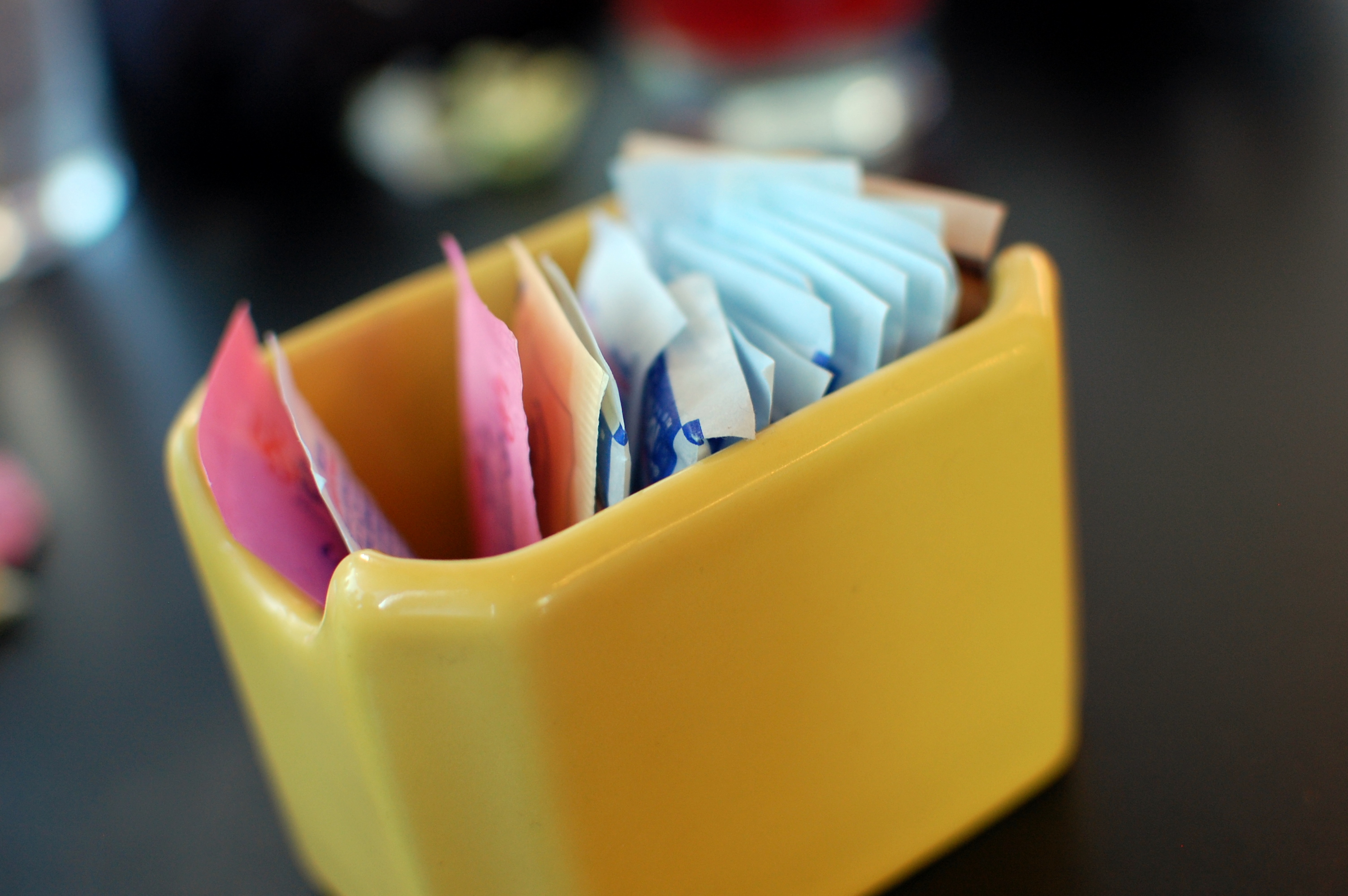By Valerie Franklin (The Cascade) – Email
Print Edition: October 8, 2014

Have a sweet tooth, but want to stay away from table sugar? You have plenty of sweet substitutes to choose from — and each has its pros and cons.
Non-caloric artificial sweeteners
Eaten anything labelled “light” or “diet” recently? It probably contained aspartame, saccharin, or sucralose, the big three artificial sweeteners commonly used across North America. Because of their chemical structure, these sweeteners release no energy as they’re metabolized, meaning that no calories are absorbed by your body. While many people find their taste disagreeable, they offer a cheap, sugar-free alternative for diabetics and people trying to cut calories out of their diet. They’re much sweeter than sugar, so less is needed, and they won’t raise your blood sugar level because they contain no carbohydrates. And they’re easy to get your hands on — packets of sweetener are usually offered along with sugar at most restaurants and cafes.
However, there are big concerns about the safety of these sweeteners. Critics argue that they can cause or exacerbate a plethora of illnesses ranging from migraines to cancer. Most recently, a mid-September study published in Nature suggested that saccharin, sucralose, and aspartame may actually contribute to metabolic disorders like type-2 diabetes rather than preventing them; researchers found that after 11 weeks of being fed these sweeteners, mice displayed glucose intolerance, an early marker for metabolic disorders, because the sweeteners had changed the composition and function of their gut bacteria. Use at your own risk.
Stevia
Stevia is a sugar alcohol derived from the leaves of the Stevia rebaudiana plant. It has virtually no calories and has little effect on blood sugar, so it can be healthy for diabetics when taken in moderation. Although it has a mild, slightly bitter aftertaste, it’s not as strong as that of aspartame, and can replace sugar in cooking and baking. It’s expensive compared to sugar, but so sweet that a little bit goes a very, very long way.
Although stevia is widely popular throughout the world, especially in Japan, the US banned it for several years in the early 1990s due to concerns about side effects. However, the veracity of those studies was called into question, and stevia has been legally sold in the US since 1995. In Canada it’s available on grocery store shelves in powder and liquid form. But watch out — it’s often sold mixed with other ingredients such as xylitol or glycerine, so make sure you’re buying the pure stuff.
Xylitol
Xylitol is another sugar alcohol like stevia. It stands out on this list because of one unusual benefit: it’s actually good for your teeth, reducing tooth decay and remineralizing the enamel. For this reason, it’s often used in chewing gum. It has approximately two thirds the calories of sugar, an extremely low glycemic index, and doesn’t appear to cause illness in the long term.
The only catch? Due to the sugar alcohols being difficult to digest, xylitol has an unfortunate laxative effect. Proceed with caution.
Agave nectar
Since agave nectar hit the sweetener scene, it’s been marketed as a healthy, plant-based liquid alternative to sugar. It’s true that it’s appropriate for vegans and raw foodists, has no strong aftertaste, and has a low glycemic index. But there’s one big problem: it actually contains more fructose than high-fructose corn syrup. As a result, it dramatically increases your insulin resistance and raises triglyceride levels, potentially leading to heart disease. It also has a similar caloric load as regular sugar, about 16 calories per teaspoon.
Just because something is marketed as “natural” doesn’t mean it’s healthy. Ignore the romantic imagery of cacti and deserts on the label, and steer clear of this one.
Maple syrup
The good news is that compared to table sugar, maple syrup is full of nutrients. A 100-gram serving packs a whopping 165 per cent of your daily recommended intake of manganese, 28 per cent of zinc, and six to seven per cent each of iron, calcium, and potassium.
The downside is that maple syrup is still mostly sucrose, the same stuff as table sugar. Out of that 100-gram serving, 67 of those are sugar. You don’t have to forgo topping your pancakes with this stuff once in a while — just don’t guzzle it on a daily basis.
Honey
Like maple syrup, honey is mostly sucrose; it consists of about four fifths sugar, and almost half of that is fructose. Its glycemic index depends on the batch and how it’s processed, but it generally raises blood sugar slightly less than table sugar does.
The upside is that in its unrefined state, honey contains powerful antioxidants called polyphenols. It also contains fluoride, vitamins B6 and C, and three times more riboflavin than maple syrup — but, like maple syrup, its sugar content outweighs its nutritional value. Use it in moderation.
What about all the rest?
Date sugar, coconut sugar, maltitol, molasses, erythritol — there’s a world of sweeteners out there that we haven’t even touched, and it’s up to you to decide which one is right for you. It’s usually a good rule to choose whole foods and naturally derived sugars, but do your research; while most sweeteners are safe in moderation, it’s always healthy to know what you’re putting into your body.


